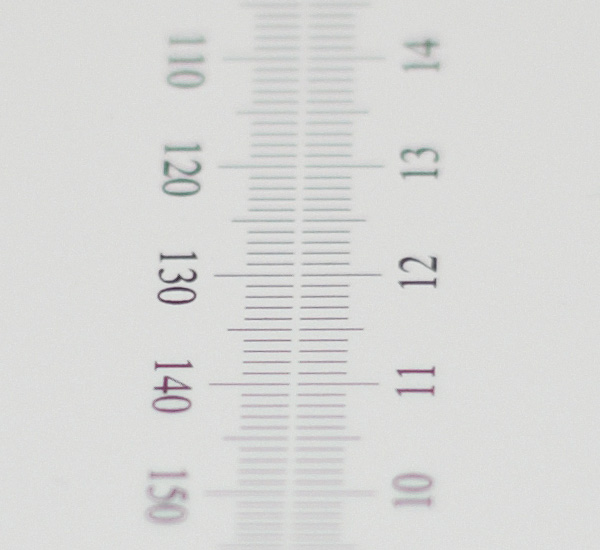|
Sony 50mm f/1.4 ( SAL-50F14 ) - Review / Test Report - Analysis |
|
Lens Reviews -
Sony Alpha/NEX (APS-C)
|
|
Page 2 of 3

Distortion
Unsurprisingly the Sony 50mm f/1.4 produces only a marginal degree of barrel distortion - nothing
to worry about in field conditions.

The chart above has a real-world size of about 120x80cm.
Vignetting
The Sony 50mm f/1.4 is a full format lens and as such enjoying the usual sweet spot advantage
when used on an APS-C DSLR. At f/1.4 you may experience moderate vignetting (0.7EV) in critical
situations but the problem is already negligible by f/2.

MTF (resolution)
Typical for most standard lenses the Sony produces excellent resolution figures EXCEPT at
very large aperture settings. At f/1.4 the center resolution is very high but
the border performance is rather dismal - same goes for the general contrast which is very low
at this setting. At f/2 most of the defects are resolved resulting in an excellent center
and very good borders. The peak performance is reached around f/4 where both the center and
the borders reach excellent levels. At and beyond f/8 diffraction is limiting factor.
Please note that the MTF results are not directly comparable across the different systems!
Below is a simplified summary of the formal findings. The chart shows line widths per picture height (LW/PH) which can be taken as a measure for sharpness.
If you want to know more about the MTF50 figures you may check out the corresponding Imatest Explanations
Chromatic Aberrations (CAs)
Lateral chromatic aberrations (color shadows at harsh contrast transitions) are not overly
well controlled with an average pixel width around 1.4px at the image borders. This
is where the rather old design shows up.

Bokeh
The quality of the bokeh, the out-of-focus blur, is naturally of major interest for
an ultra-large aperture lens. The Sony lens features a circular aperture shapes which
remains intact till just after f/2 - at f/4 the individual aperture blades are getting
more obvious. At f/1.4 there's some outlining at the edges of the highlight shapes
but this is much better at f/2 and gone by f/2.8. The general blur is somewhat
busy at f/1.4 (see also the fence in the sample image section) but improves at f/2 and
f/2.8. You may also notice the rather massive amount of longitudinal chromatic aberrations
in the cards - more on this in the next chapter.

You can download the full-size images here:
Longitudinal Chromatic Aberrations (LoCA)
LoCAs (non-coinciding focal planes of the various colors), sometimes called "bokeh CAs", are a
further aspect. Similar to most other ultra-large aperture lenses the Sony 50mm f/1.4 has also
some stakes here but it's somewhat more pronounced than usual. As you can notice below the
halos have different colors - magenta (red + blue) in front the focus point and green beyond.
The problem is rather hefty at f/1.4. It decrease slowly the further you stop down but it is
still there at f/4.
|
Move the mouse cursor over the f-stop marks below to observe the respective LoCAs
|
| f/1.4 |
f/2 |
f/2.8 |
f/4 |
|

|
|